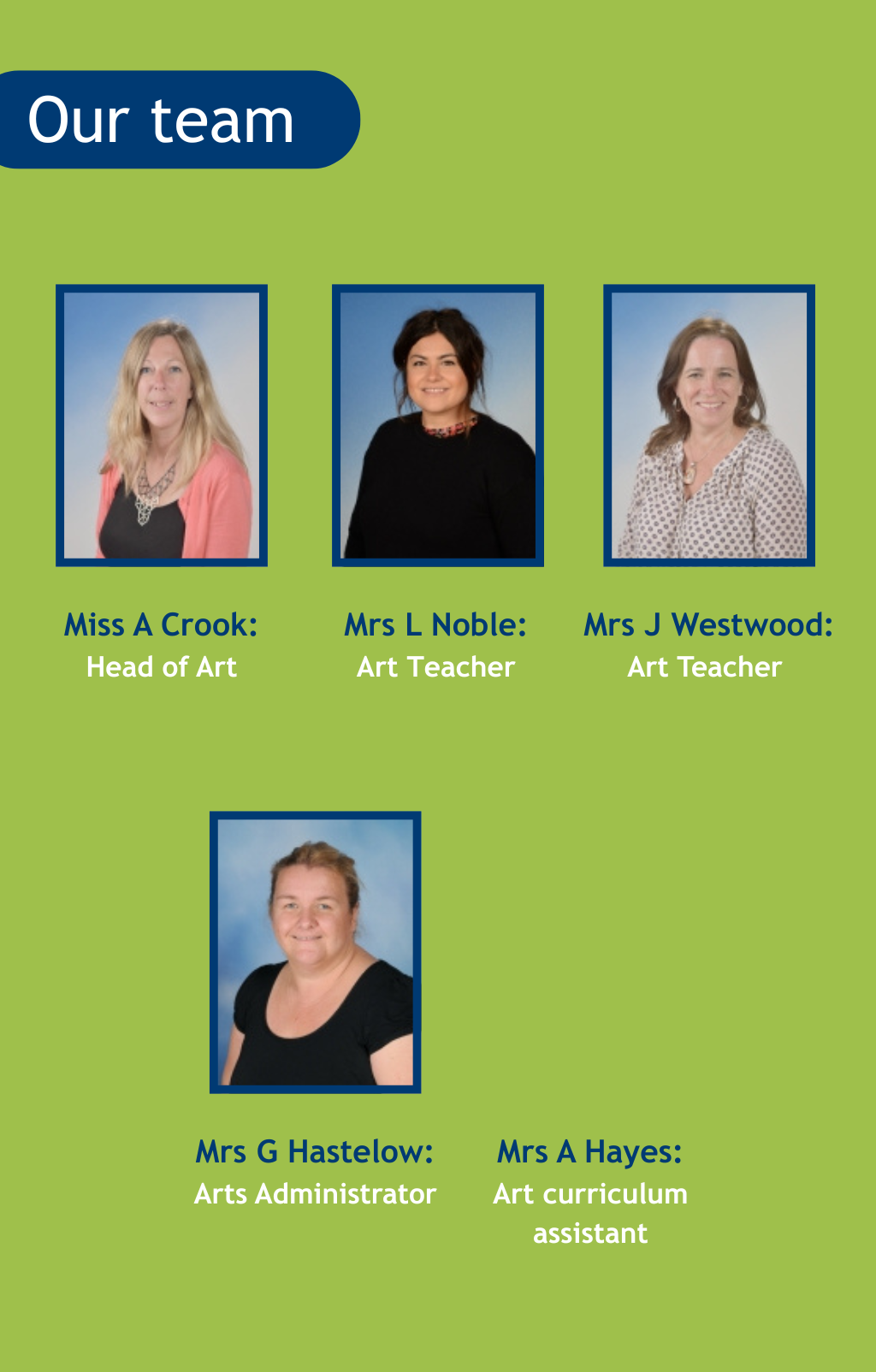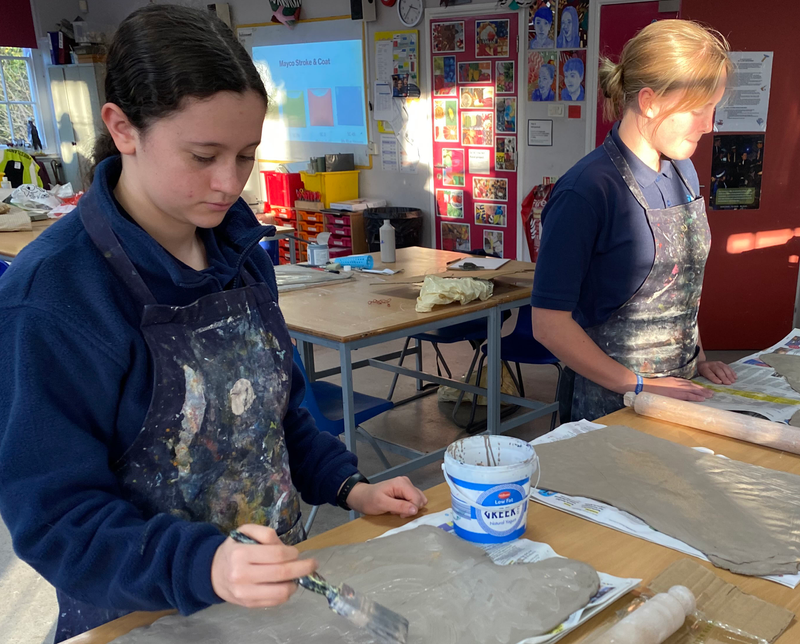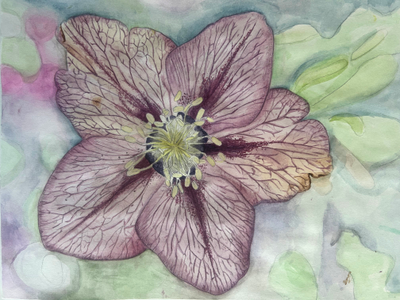Art & Photography
Head of Department: Miss A Crook
Our Aim
Art at Priestlands is highly valued in school and in the wider community. Our excellent results reflect the department’s commitment to teaching a broad range of art skills and delivering an exciting and varied curriculum that encourages our students to take pride and ownership of their work.
We pride ourselves on our wide range of teacher based skills that allow our students to explore their ideas creatively using diverse outcomes. We offer printmaking, ceramics, glass, sculpture, carving, fine art painting and photography and encourage the use of ICT through the latest Photoshop.
We aim to promote independence through our project briefs that cater for all abilities. Our projects introduce students to both traditional and contemporary artists, designers, photographers and cultures. We explore ourselves and the world around us as visual starting points and encourage students to analyse and engage with each other when developing their artistic and cultural experiences.
Facilities
The art department is housed in the stunning Gurney Dixon building. There are three teaching rooms and an artist-in-residence studio. Each room is equipped with computers and we have the facility to print through the use of two portable printing presses. Our two kilns enables students to produce ceramics or use glass to fuse or slump into molds.
Key Stage 3 course
At key stage 3, we follow structured schemes of work that provide the basic building blocks that you need in any art discipline. All students get to experiment with printmaking and ceramics along with the more traditional art materials to interpret briefs such as Day of the dead, Landscapes and Portrait. We also set home study projects where students can interpret creatively set briefs that run parallel to the learning taking in place within the classroom.
Key Stage 4 course
At GCSE we run three courses, Fine Art, 3D Art and Photography where students are encouraged to develop greater independence and show deeper thinking and analytical skills. Students work solely on their own broadly set project briefs where they choose their own direction and plan their own art journey and final outcomes. As teachers we facilitate these journeys and guide students through our extensive knowledge and expertise.
During the course students complete projects such as Sealife, Abstract and Structures; these projects comprise 60% of their final grade. At the end of the course students are given an externally set brief which
makes up the remaining 40%; they will select an exam question and produce an outcome based on their chosen theme.



